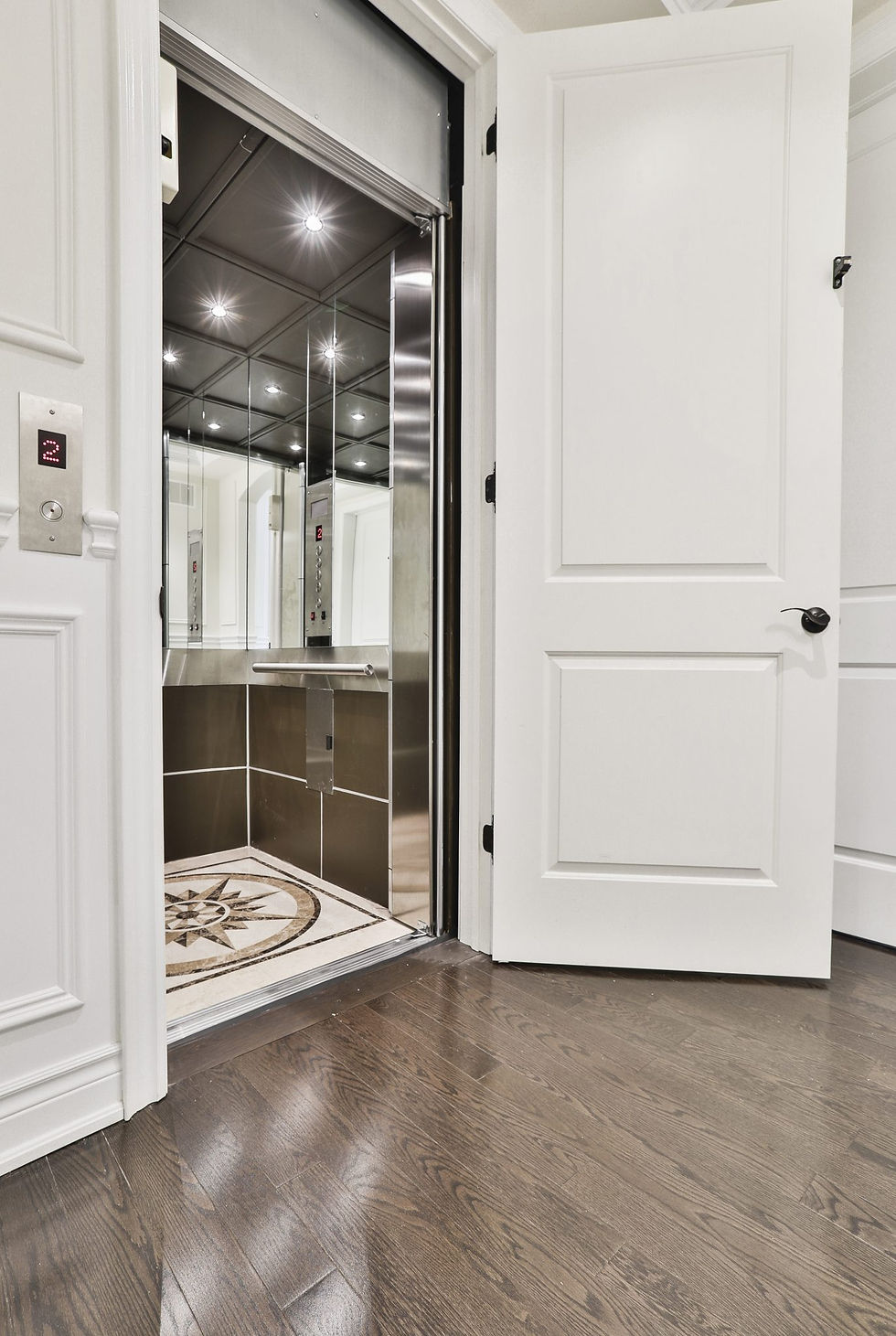Home Lifts for Canadian Residences: A Practical Accessibility Solution for elevators for home use
- Sabre Elevator

- Aug 6
- 4 min read
In modern homes, accessibility and convenience are becoming increasingly important. Elevators for home use offer a practical solution to mobility challenges, allowing residents to move easily between floors without strain or risk. Whether for aging family members, individuals with disabilities, or simply for added luxury, home elevators provide a safe and efficient way to navigate multi-level living spaces.
Benefits of Elevators for Home Use
Installing elevators for home use brings numerous advantages that improve quality of life and add value to a property. Here are some key benefits:
Improved Accessibility: Elevators eliminate the need to climb stairs, which can be difficult or dangerous for seniors or people with mobility issues.
Increased Safety: Reducing stair use lowers the risk of falls and injuries inside the home.
Convenience: Carrying heavy items like groceries, laundry, or furniture between floors becomes easier.
Space Efficiency: Modern home elevators can fit into small spaces, including narrow stairwells or closets.
Property Value: Adding an elevator can increase a home’s market appeal and resale value.
For example, a family with elderly parents might install an elevator to ensure their loved ones can move independently and safely. Similarly, a homeowner with young children may find an elevator useful for transporting strollers or heavy toys between floors.

Types of Elevators for Home Use
There are several types of elevators designed specifically for residential settings. Choosing the right one depends on space, budget, and specific needs. Common types include:
DC Belt Drive Elevators: DC Belt Drive Elevators operate using a belt-driven mechanism, providing a smooth and efficient means of vertical transportation. Unlike traditional cable systems, these elevators utilize a direct current motor to drive the belt, allowing for quiet operation and enhanced performance. The design of DC Belt Drive Elevators is more compact, additionally, they can be installed with minimal structural modifications, optimizing the overall floor plan.
Hydraulic Elevators: These use a hydraulic piston to move the cab. They are smooth and quiet but require a machine room.
Traction Elevators: Powered by cables and counterweights, these are energy-efficient and suitable for taller homes.
Pneumatic Elevators: These use air pressure to move the cab and require minimal space and no pit or machine room.
Each type has pros and cons. For instance, shaftless elevators are ideal for homes with limited space because they don’t need a shaft or pit. DC belt drive elevators can handle heavier loads and provide a smooth ride.
When selecting an elevator, consider factors such as:
Floor-to-floor height
Load capacity
Installation space
Maintenance requirements
Budget constraints

What is the Alternative to a Home Lift?
While elevators for home use are an excellent solution, some homeowners may explore alternatives depending on their needs and home layout. Common alternatives include:
Stairlifts: These are motorized chairs that move along a rail attached to the staircase. They are less expensive and easier to install but only accommodate one person at a time.
Platform Lifts: These lifts carry a wheelchair or standing passenger between floors. They require less space than elevators but may not be suitable for all home designs.
Ramps: For single-level accessibility or small elevation changes, ramps provide a simple solution but are not practical for multi-story homes.
Home Renovations: Redesigning the home to have all essential rooms on one floor can eliminate the need for vertical transportation.
Each alternative has limitations. Stairlifts, for example, can be cumbersome for carrying heavy items and may not be suitable for homes with narrow or curved staircases. Platform lifts often require outdoor installation or specific indoor space.
For those seeking a seamless and elegant solution, a home lift remains the most versatile and user-friendly option.

Installation Considerations for Home Elevators
Installing an elevator in a home requires careful planning and professional expertise. Here are important factors to consider:
Space Requirements: Measure the available space to determine which elevator type fits best.
Structural Modifications: Some elevators need a shaft, pit, or machine room, which may require construction work.
Building Codes and Permits: Compliance with local regulations is essential for safety and legality.
Power Supply: Elevators need a reliable electrical connection; backup power options can enhance safety.
Maintenance: Regular servicing ensures smooth operation and longevity.
Working with experienced elevator installers can simplify the process. They can assess your home, recommend suitable models, and handle permits and installation.
Enhancing Home Accessibility with a Home Elevator
A home lift is more than just a convenience - it is a vital accessibility tool that promotes independence and safety. Here are some tips to maximize its benefits:
Plan for Future Needs: Choose an elevator that can accommodate potential mobility aids like wheelchairs or walkers.
Integrate Smart Controls: Modern elevators can be operated via smartphone apps or voice commands for ease of use.
Ensure Adequate Lighting: Well-lit elevator interiors and landings improve safety.
Add Safety Features: Emergency alarms, intercoms, and backup power enhance security.
Customize Design: Select finishes and materials that complement your home’s style.
By investing in a home elevator, you create a living environment that adapts to changing needs and enhances everyday comfort.
Elevators for home use represent a smart investment in accessibility, safety, and convenience. Whether upgrading an existing home or planning a new build, considering a home elevator can transform how you live and move within your space. For those seeking a reliable and stylish solution, exploring options like the home lift can open doors to greater freedom and peace of mind.



留言